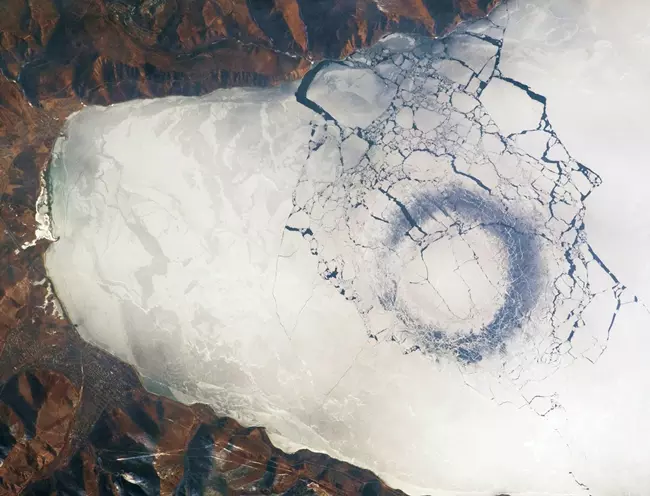What causes the huge ice circles in the Lake Baikal
Over the past 20 years, scientists discovered huge, attention-grabbing ice circles on the Lake Baikal, Russia, South Siberia. These large and mystic circles are 5-7 km (4-5 miles) in diameter, and they are only visible from airplanes or on satellite images. There were some diverse concepts about how they are generating from the activity of an unknown underwater species to the magical Buryat shaman rituals.
Source: NASA; https://earthobservatory.nasa.gov/images/38721/circles-in-thin-ice-lake-baikal-russia; https://gl.m.wikipedia.org/wiki/Ficheiro:Circles_in_Thin_Ice,_Lake_Baikal,_Russia.webp
The most popular theory that the huge ice circles are made by methane outburst was eventually disproven due to objective geological reasons, the simply answer there are no known methane emissions in the area.
In the last few years it turned out that not only the Baikal has these circle-like ice formations. Some other lakes, for example the Lake Horsgol in Mongolia or the Lake Teletskoye also have these mysterious natural phenomenons. As additional research show us most of the deep freshwater lakes, those that freeze completely during the winter, have the same ice circles on their white winter crust.
The observed icicles appeared in different sizes and locations, but each was characterized by a bright centre surrounded by a dark circle.
A group of international experts from France, Russia and Mongolia decided to search for the answer to how these giant phenomenons formed. The scientists started their research in 2016, and travelled to the lake Baikal where they drilled holes in the ice and dropped sensors into the water of the lake below the crust. They also studied infrared satellite pictures to see, what happens under the ice.
The sensors dropped under to the ice crust estimated that the water temperature of the eddies is 2 to 4 degrees Fahrenheit (1 to 2 degrees Celsius) warmer than the surrounding water, while the eddies themselves are well-known for their lenticular shape, which is rare in lakes but is common in oceans.
As it turned out during the research the Baikal in 2016, the largest freshwater source in the world by volume, it seems to have quite a few warm eddies flowing clockwise under the ice. The dark circle is the result of the temperature difference and the flowing water.
However, the centre of the eddies have typically the least strong currents, which explains that these rings still have extremely thick ice at the centre. Nevertheless, the dark parts of the circles are weaker, and in some situations they can be dangerous. The rings give off certain sounds, and these can be heard, at ground level, so travelling across these giant circles could be dangerous.
In the winter of the year 2017, the group of the international scientists found a warm water eddy under the crust of the Lake Baikal, but there was no circle on in the ices. They thought that the specific formation had not yet formed until that time, but later in that winter the circle still not appeared.
The work of these scientists has shown us the most likely cause of the particular and amazing ice circles, but the mystery has not yet reached its end. We do not know yet why not all of the eddies form circles in the ice crust, and what causes the eddies to begin with.
Donát Novák
February 2020
